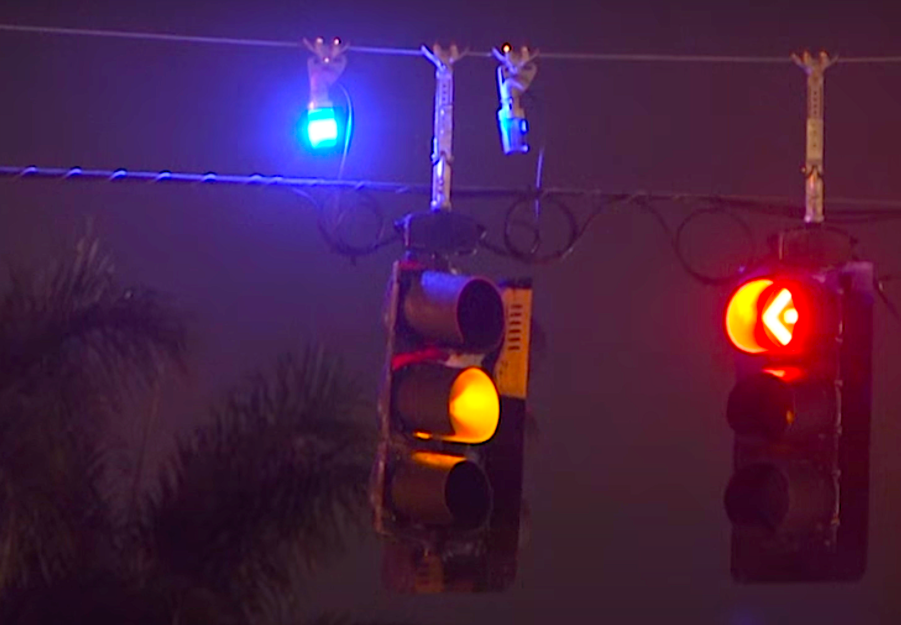
Arizona and Mississippi Have Blue Lights at Intersections: What Are They For?
The city of Tucson has begun installing blue lights at busy intersections. They’re for “better traffic enforcement,” but what do they do? Mississippi has them, too. So, what are the blue traffic lights for?
If you’ve been to Japan, you might have seen the street lights that look more blue than green. That’s because, almost since the beginning, Japan had words for only four colors, black, white, red, and blue, to the end of the first millennium. The practice of defining green as blue continues in some cases, which is why some traffic lights are blue.
So, what are these blue intersection lights for?

But that’s not what’s going on in the U.S. The blue lights aren’t for cameras or for radar. They’re to alert police of someone running a red light. Say, what? When the police come to an intersection, the blue light indicates the cross traffic has a red light.
The police aren’t always able to see cross-traffic signal lights. So, if they observe a car in cross traffic going through an intersection with a blue light lit, the police know that person has run a red light. You could say it is a blue light for a red light.
Why would police need blue lights for red lights? Sergeant David Fritsch of the Tucson Police Department told KOLD 13News that many drivers think the intersection starts at the crosswalk lines or the white stop bar. “But there’s actually quite a bit of distance. The Craycroft and Grant intersection, for example, has 10 to 15 feet between the crosswalk and where the intersection begins.”
What are the police saying about the blue lights?

So how the Tucson police see it is if you’ve made it into the intersection before they see the blue light come on, then you’re legally entering it. “By definition of the law, you are not allowed to stop within a crosswalk,” said Fritsch, “But, we as officers operate on a human level, understand that certain things like reaction time, proper braking distance, things like that. So, if you stop and you stop in the crosswalk, yes, there’s some reasonableness that we apply to the law.”
We should add that beyond red, yellow, green, and sometimes blue, we’re approaching when a white light will be part of the intersection traffic lights. That’s because white lights will enhance traffic flow through intersections. More cars are being made with both Connected Vehicle (CV) and Automated Vehicle (AV) technology.
What about those white intersection lights?

So, both systems can communicate with traffic lights set up to receive CV and AV signals, according to CalTrans. They also communicate with each other. Combining all of this data can alter signal light timing to allow more or fewer cars through intersections, creating a better flow. This equates to less time getting from point A to point B.
So, while we are seeing more and more blue lights at intersections, expect white lights to be part of the traffic signal mix in the not-too-distant future.



